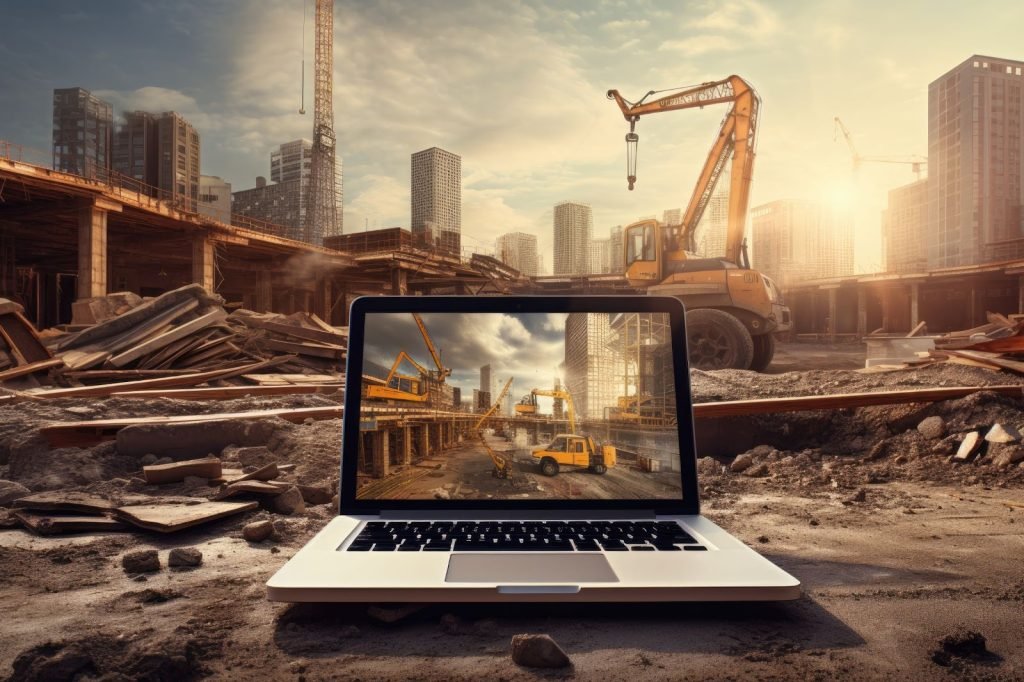Construction sites face unique security challenges, including theft, vandalism, and unauthorized access due to the high value of equipment and materials. Remote video surveillance offers an effective solution, providing round-the-clock monitoring and ensuring safety and compliance.
In this guide, we’ll explore the key benefits of remote video surveillance for construction sites, the essential features to look for, and tips for choosing the right system.
Why Remote Video Surveillance is Critical for Construction Sites
Construction sites are particularly vulnerable due to:
- Valuable Equipment and Materials: Heavy machinery and materials make construction sites prime targets for theft.
- Multiple Access Points: Large sites often have numerous entry points, making them difficult to secure.
- Remote Locations: Many construction sites are located in isolated areas with minimal physical security.
- Safety and Compliance Monitoring: Remote video surveillance can help ensure workers follow safety protocols, minimizing the risk of accidents.
Remote video surveillance addresses these issues by providing real-time monitoring and ensuring the site is secure, even when workers aren’t present.
Key Benefits of Remote Video Surveillance for Construction Sites
1. Theft Prevention
Theft is a significant issue on construction sites. Remote video surveillance serves as a deterrent, making potential thieves think twice before targeting your site. In the event of a break-in, real-time footage allows for quick intervention and evidence gathering, helping to track down culprits and recover stolen items.
2. 24/7 Monitoring
Remote video surveillance systems provide continuous monitoring, even during off-hours. You can monitor the site from anywhere, ensuring you’re always in the loop. Advanced systems also offer real-time alerts for unauthorized activity, allowing you to respond immediately.
3. Enhanced Safety
Safety is a top priority on construction sites. Video surveillance can help monitor workers to ensure they are following safety protocols. It also allows for the quick identification of hazardous conditions or unsafe practices. In the event of an accident, footage can be reviewed to understand what went wrong and how to prevent future incidents.
4. Reduced Liability
In case of disputes or accidents, video footage can provide crucial evidence, helping to clarify events and resolve issues. For example, if an injury occurs, video evidence can determine whether safety regulations were followed. This helps protect your company from false claims and legal liabilities.
5. Cost Savings
While the initial cost of installing a video surveillance system may seem high, it quickly pays for itself by preventing theft, reducing downtime, and lowering liability risks. Insurance companies often provide discounts for sites with video surveillance, further contributing to long-term cost savings.
Essential Features of a Remote Video Surveillance System
Not all video surveillance systems are the same. Here are some key features to consider when choosing a system for your construction site:
1. High-Resolution Cameras
Clear, detailed footage is essential for identifying intruders or suspicious activity. Look for cameras that offer at least 1080p resolution, ensuring clear images even in challenging conditions. Wide-angle cameras can also help cover larger areas, reducing the total number of cameras needed.
2. Night Vision
Most construction sites lack proper lighting during off-hours. Cameras with night vision or infrared capabilities allow you to monitor the site effectively in low-light conditions, ensuring that your security doesn’t depend on natural or artificial light.
3. Weatherproof Equipment
Construction sites are exposed to the elements, so it’s crucial to invest in durable, weatherproof cameras that can withstand harsh conditions such as rain, wind, and dust. Look for equipment that is rated for outdoor use and can endure extreme temperatures.
4. Cloud Storage
Storing footage in the cloud ensures that your data is securely backed up and easily accessible from anywhere. Cloud storage also reduces the risk of losing footage due to physical damage or theft of on-site storage devices. Additionally, cloud-based systems offer scalable storage options, allowing you to keep as much footage as needed.
5. Mobile Access
Mobile access is a critical feature for remote video surveillance. With the ability to view live footage and recorded videos on your smartphone or tablet, you can monitor your site in real-time from anywhere. Most modern systems offer user-friendly apps that allow for easy control and access to the camera feeds.
6. Motion Detection
Motion detection technology helps to minimize unnecessary recording and storage use by only capturing footage when activity is detected. This feature ensures you only receive alerts when something happens, reducing false alarms. You can also customize motion detection zones to focus on high-risk areas like entrances or places where valuable equipment is stored.
How to Choose the Right Remote Video Surveillance System
Selecting the right remote video surveillance system depends on your site’s specific needs. Here are a few factors to consider:
- Site Size and Layout: Larger sites will need more cameras for full coverage. Assess the site’s blind spots, entry points, and areas where valuable materials are stored to determine optimal camera placement.
- Budget: There are systems for every budget, ranging from basic setups to advanced systems with high-resolution cameras, night vision, and cloud storage. While more features may come with a higher price tag, they provide better security and long-term savings.
- Installation: Wireless cameras offer easier installation and flexibility, especially in remote or hard-to-reach areas. Wired systems may offer more reliable performance but can be more costly and complicated to install.
- Professional Monitoring: Some systems allow for self-monitoring, but you may want to hire a professional monitoring service for 24/7 support. This option ensures that someone is always keeping an eye on the site, even when you’re not available.
Conclusion:
Remote video surveillance is an essential tool for securing construction sites. It prevents theft, enhances worker safety, and reduces liability risks. By investing in a system with the right features—such as high-resolution cameras, night vision, and cloud storage—you can ensure that your site is protected around the clock. With continuous monitoring and real-time alerts, you’ll have the peace of mind that your construction site is secure, no matter where you are.


